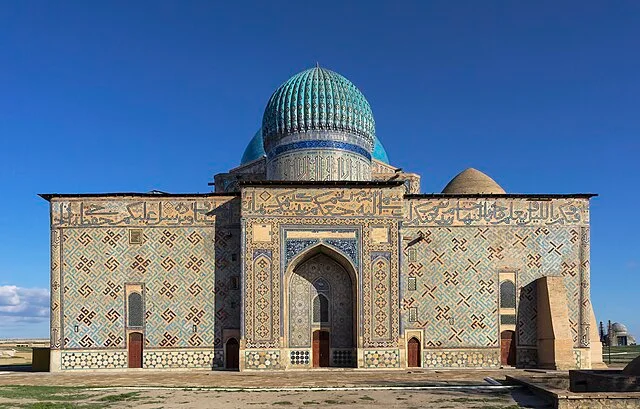The Mausoleum of Khoja Ahmed Yasawi is an important historical and architectural site located in present-day Turkistan, Kazakhstan. It was built to honor Khoja Ahmed Yasawi, a Sufi mystic and poet who lived from 1103 AD to 1166 AD. Yasawi’s teachings and influence spread across the Islamic world, and the mausoleum was constructed after his death to preserve his memory.
Get your dose of History via Email
Historical Background
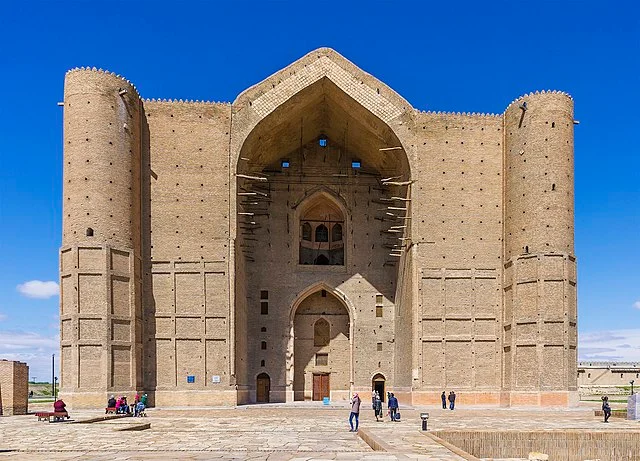
Construction of the mausoleum began in 1389 AD under the orders of Timur, the ruler of the Timurid Empire. Timur admired Yasawi’s spiritual legacy and wanted to create a monumental structure over his grave. However, the construction was left unfinished following Timur’s death in 1405 AD. Despite this, the mausoleum remains one of the largest and most significant buildings of the Timurid period.
Architectural Features
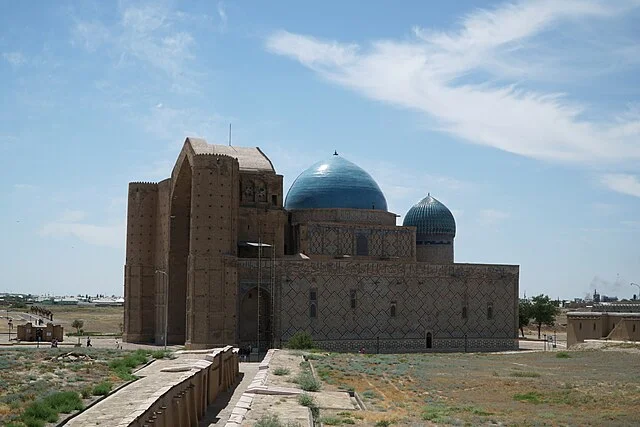
The mausoleum represents a striking example of Timurid architecture. It is notable for its massive scale and intricate design. The building is made primarily of brick, with a large central dome, which is 44 meters high. It features both geometric and floral patterns typical of Islamic art.
One of the key features of the mausoleum is the “kazanlik,” a large hall that houses a bronze cauldron, symbolizing hospitality. The main chamber, where Yasawi’s tomb lies, is situated directly beneath the central dome. Several smaller rooms and passageways surround the main hall, reflecting a symmetrical design.
Cultural Significance
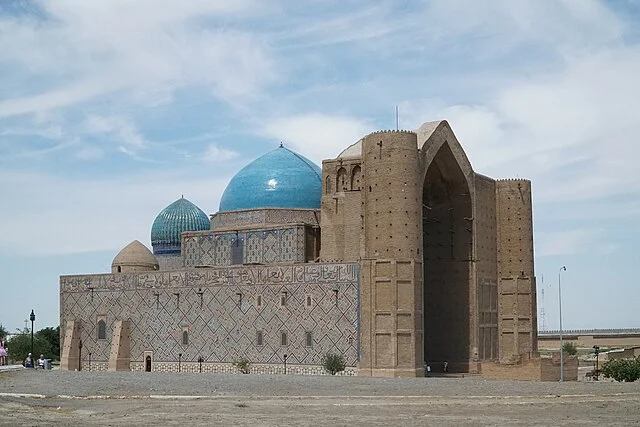
The Mausoleum of Khoja Ahmed Yasawi became an important religious center in Central Asia. Pilgrims visited the site to pay their respects to Yasawi and seek spiritual blessings. Over the centuries, the mausoleum has also become a symbol of the cultural and spiritual heritage of Kazakhstan.
Preservation Efforts
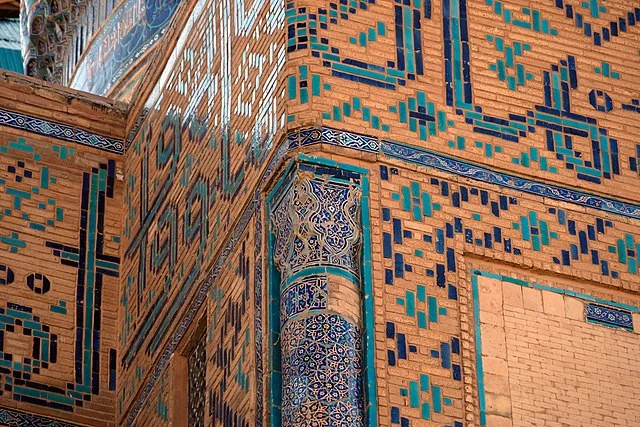
In 2003 AD, UNESCO designated the Mausoleum of Khoja Ahmed Yasawi as a World Heritage Site. Restoration efforts have been undertaken to preserve the structure, particularly its intricate tilework and domes. The mausoleum remains a key cultural and historical landmark in the region, attracting scholars, pilgrims, and tourists.
Conclusion
The Mausoleum of Khoja Ahmed Yasawi is a vital monument of Timurid architecture and Islamic history. Its blend of spiritual and architectural significance makes it an enduring symbol of Central Asian culture. Despite being incomplete, the mausoleum continues to inspire awe and reverence today.
Source:

